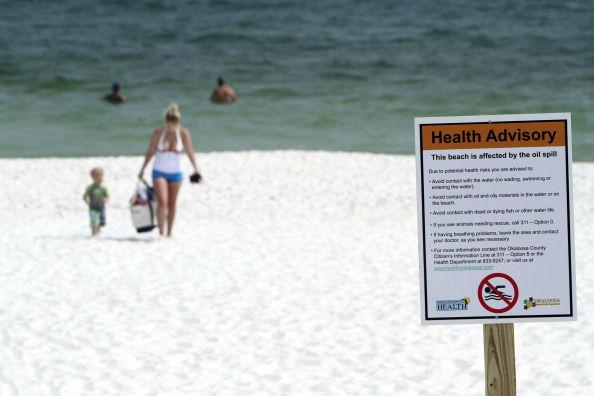Florida beaches shut down swimming after finding elevated levels of fecal bacteria
The bacteria can cause human disease, infections or rashes

Your support helps us to tell the story
From reproductive rights to climate change to Big Tech, The Independent is on the ground when the story is developing. Whether it's investigating the financials of Elon Musk's pro-Trump PAC or producing our latest documentary, 'The A Word', which shines a light on the American women fighting for reproductive rights, we know how important it is to parse out the facts from the messaging.
At such a critical moment in US history, we need reporters on the ground. Your donation allows us to keep sending journalists to speak to both sides of the story.
The Independent is trusted by Americans across the entire political spectrum. And unlike many other quality news outlets, we choose not to lock Americans out of our reporting and analysis with paywalls. We believe quality journalism should be available to everyone, paid for by those who can afford it.
Your support makes all the difference.Beaches in Florida along the Gulf Coast are no longer letting people swim after finding high levels of toxic and fecal bacteria in the water.
The two beaches in Walton County have a “no swim” advisory, while six beaches in Okaloosa County still allow swimming but have a “health advisory” after discovering elevated levels of the enterococci bacteria which is less likely to die off in salt water.
The Florida Health Department said all other beaches along the Panhandle have “satisfactory” water quality.
The enterococci bacteria are normally found within the intestinal tract of human and animals, and indicate fecal pollution from stormwater, pets and human sewage.
High concentrations of the bacteria, if ingested while swimming, or entering the skin through an open cut, can cause human disease, infections or rashes.
According to Medscape, infections commonly caused by the bacteria are: “urinary tract infection (UTIs), endocarditis, bacteremia, catheter-related infections, wound infections, and intra-abdominal and pelvic infections.”
The young and elderly, especially those with weakened immune systems, would be at most risk. People with open wounds are advised not to swim.
Water quality is considered poor if bacteria levels are above 70 enterococci per 100 milliliters of marine water, but WSB news reported that Walton County water levels exceed 900.
WSB previously incorrectly reported that more beaches were closed and that the bacteria was “flesh-eating”.
“I apologize for any confusion this may have caused,” WSB chief meteorologist Glenn Burns said on Facebook.
Florida began testing for the bacteria in 1998, and it has since expanded to more than 34 of the state’s coastal counties, testing for fecal coliform as well as the enterococci bacteria.
All the participating counties are tested on a weekly basis.
Join our commenting forum
Join thought-provoking conversations, follow other Independent readers and see their replies
Comments